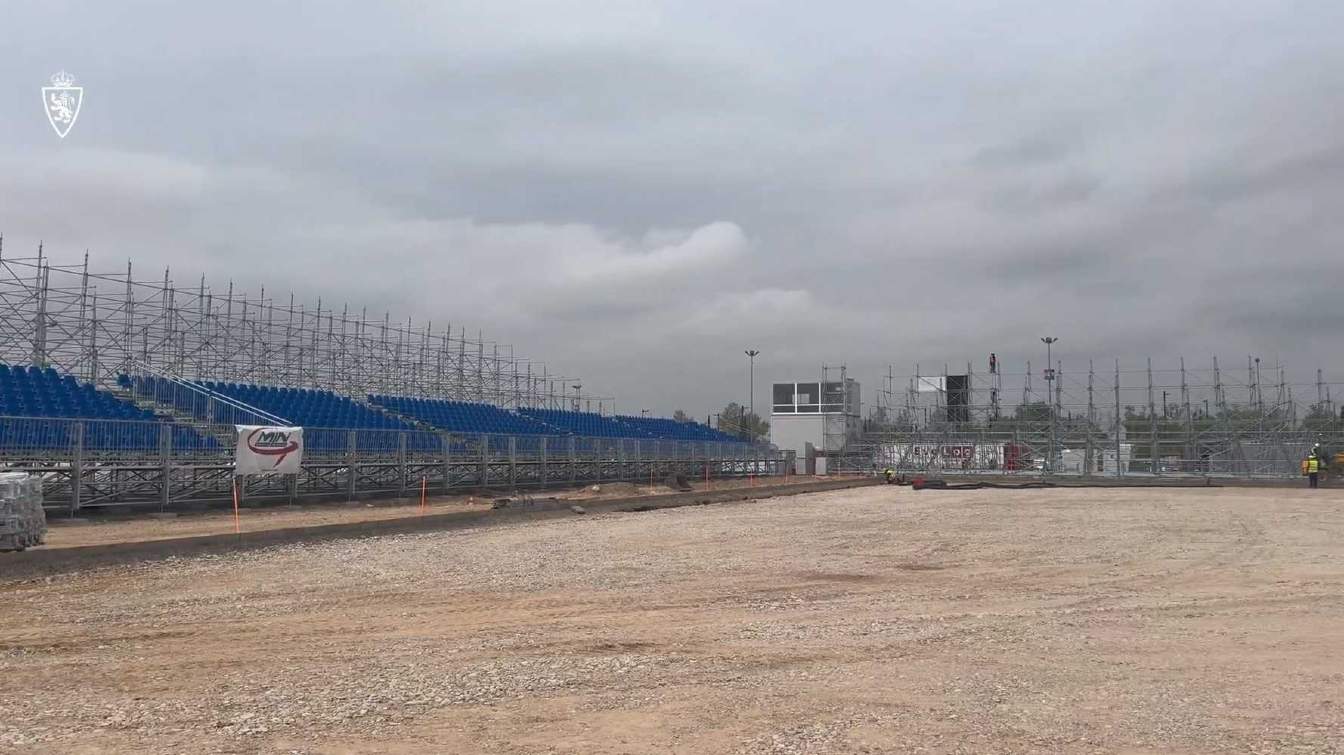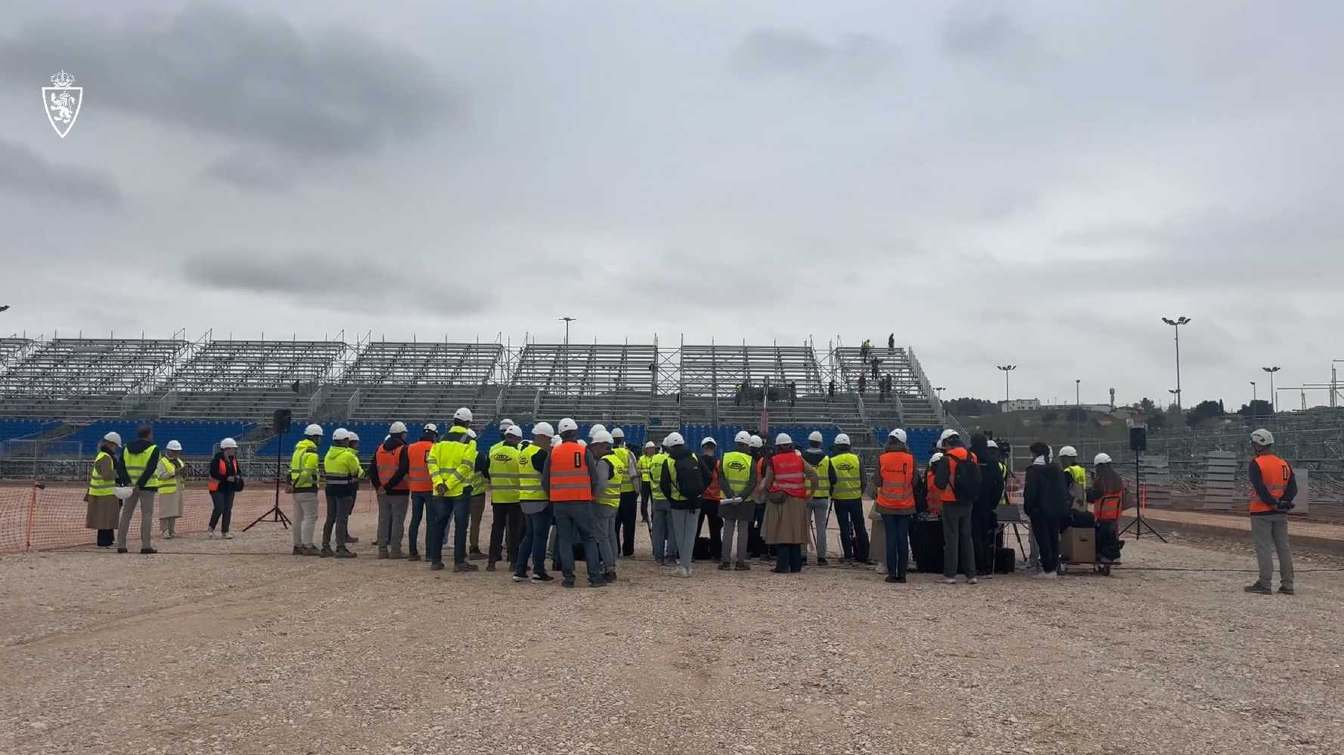Spain: First seats installed at Mini Romareda!
source: StadiumDB.com; author: Jakub Ducki
 Although construction began less than two months ago, the modular stadium in Zaragoza is already starting to look like a proper football ground. The grandstand structures are complete, seats are being installed, and the first outlines of the future pitch have been marked.
Although construction began less than two months ago, the modular stadium in Zaragoza is already starting to look like a proper football ground. The grandstand structures are complete, seats are being installed, and the first outlines of the future pitch have been marked.
Advertisement
Full steam ahead
The temporary stadium, provisionally dubbed Mini Romareda, is being built at a rapid pace. According to the schedule, the project is set to be completed by the second week of June, allowing Real Zaragoza to start the 2025/26 season at the new venue. Construction began on February 20, starting with the demolition of an old parking surface, which had been sporadically used for local events since Expo 2008.
Now, four metal stands have risen on the site, all of which are fully assembled. Seat installation is underway on three of them — a total of 17,000 blue seats and 3,000 anthracite ones for the main stand, named Tribuna Preferente.
Although the initial design included a roof over the main stand, that plan was eventually dropped. Martín Fuica, manager of Nueva Romareda (the company overseeing the project), explained that the roof would have significantly increased the cost without providing tangible benefits for what is ultimately a temporary stadium.
There was no point in building that roof, as it would’ve greatly raised the project's cost without adding real value to a portable stadium,
he stated. Instead, the corners between the stands will be enclosed to improve comfort by reducing wind exposure.
The new venue will also incorporate familiar elements from the current Romareda. These include the benches for substitutes and the distinctive deep-net goals, both of which will be relocated. The floodlight towers — relatively new fixtures installed in 2022 — will also be moved, though only after the current season ends.
Infrastructure and logistics
In addition to the stands and pitch, essential supporting facilities are under construction. A service building is being erected, featuring changing rooms, a conference room, a café, and restrooms. It will be directly connected to the Tribuna Preferente and the tunnel leading to the pitch, streamlining matchday logistics.
Fans will benefit from 32 access points enabling smooth entry to the stands. Camera towers for TV broadcasts have also been installed, and to avoid vibrations caused by fan movement, they are structurally separated from the stadium itself.
The stadium’s construction will cost €12.7 million, jointly funded by the City of Zaragoza, the regional government of Aragon, and Real Zaragoza. Two companies are executing the project: MLN and Nussli — the latter specializes in modular stadium construction and was responsible for temporary stands at the recent Paris Olympic Games.
Simultaneously, work is underway on the surrounding infrastructure. The regional government has allocated an additional €2.5 million for the creation of two large parking lots, accommodating over 1,600 vehicles. Plans are also in motion to enhance local transport — tram and bus lines will be reinforced on matchdays.
Stadium name still up in air
One of the biggest unknowns remains the stadium’s name. According to Zaragoza’s mayor and president of Nueva Romareda, Natalia Chueca, the city is still searching for a naming rights partner. Negotiations with potential sponsors are ongoing, though no specific price has been disclosed yet.
Chueca emphasized that the project enjoys the full support of local authorities, the Aragonese government, and the club itself. Real Zaragoza will use the stadium for two seasons until the new permanent stadium is completed.
Opening and future plans
While an opening match featuring the Spanish women’s national team was initially considered, the federation eventually scrapped the idea. It is now confirmed that Real Zaragoza will host the inaugural match at the Mini Romareda.
After the temporary stadium's use ends, it is expected to be dismantled. However, the pitch — which will soon be laid with turf mats — is likely to remain. Mayor Chueca stated that it could become the foundation for a mid-sized stadium as part of a broader Sport City project promoted during her election campaign. There is demand in the city for a facility like this
she assured.
Advertisement

 StadiumDB
StadiumDB

